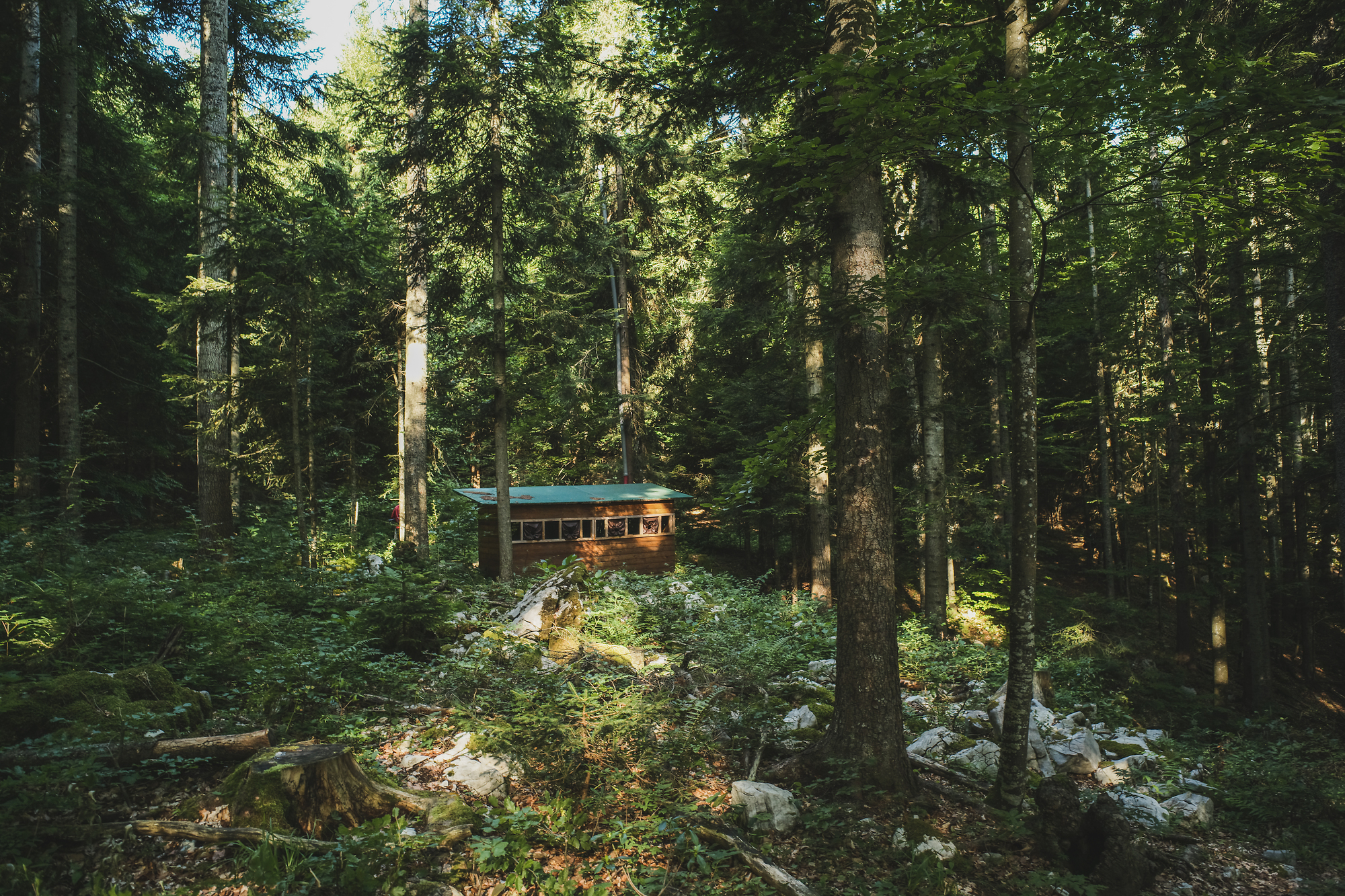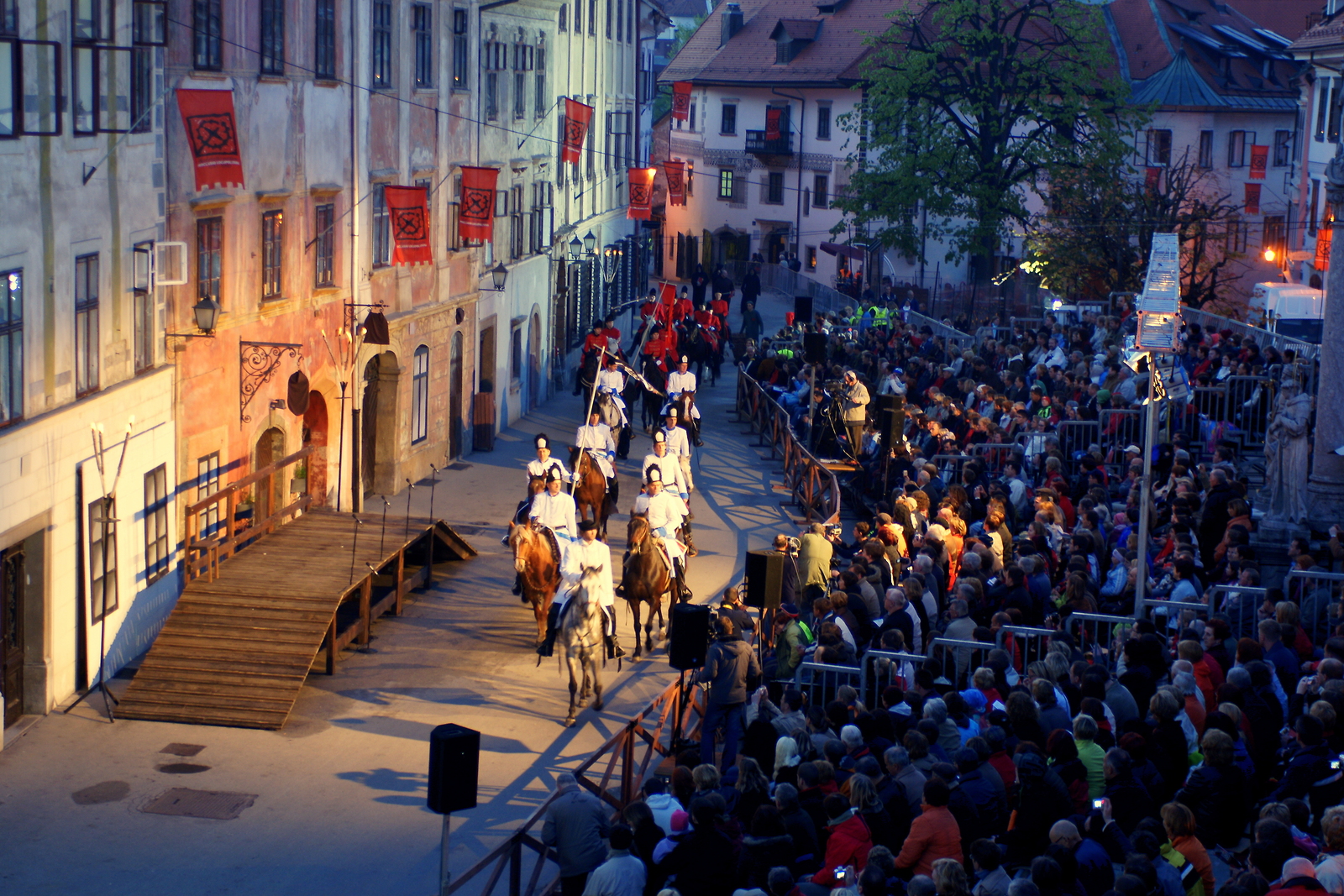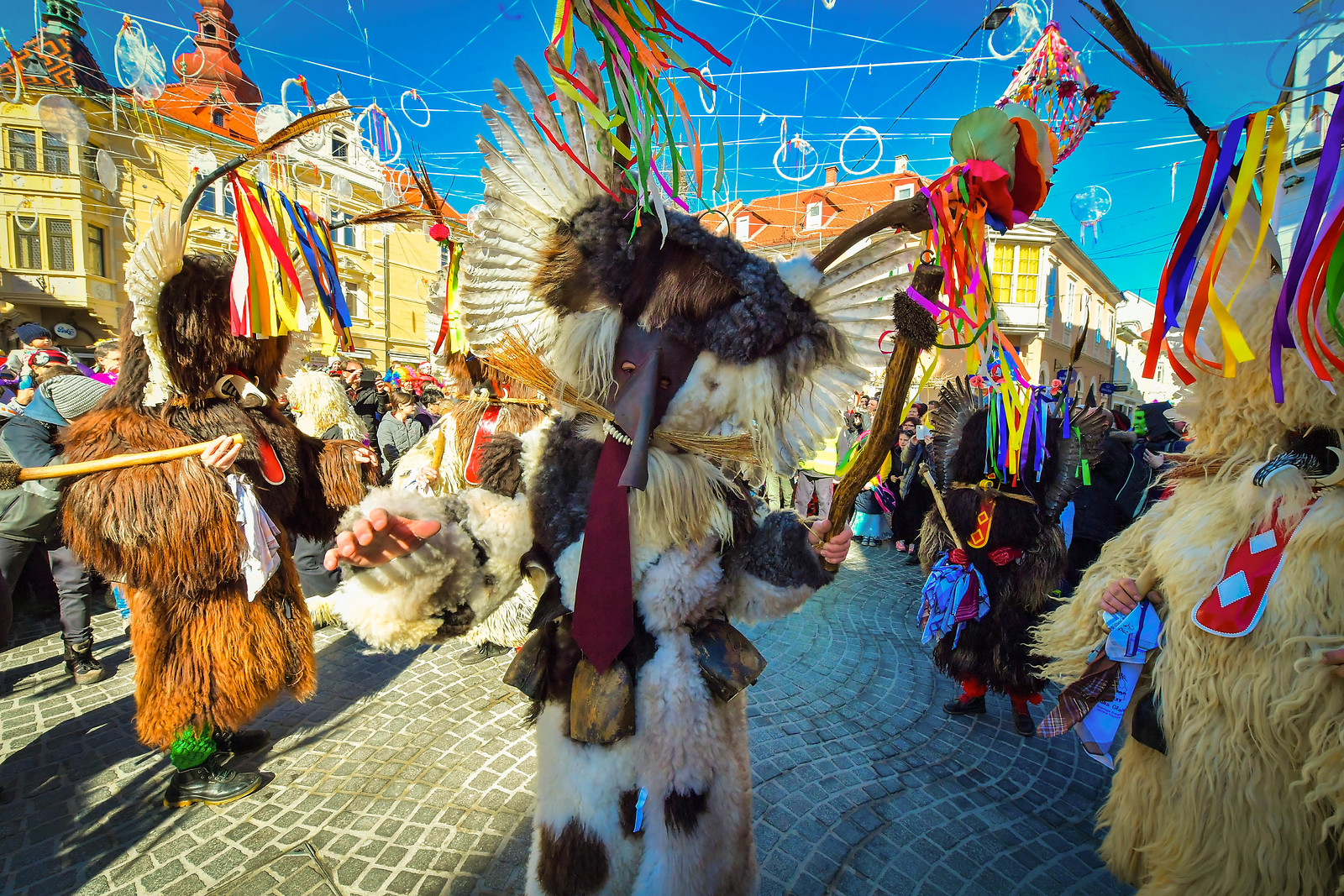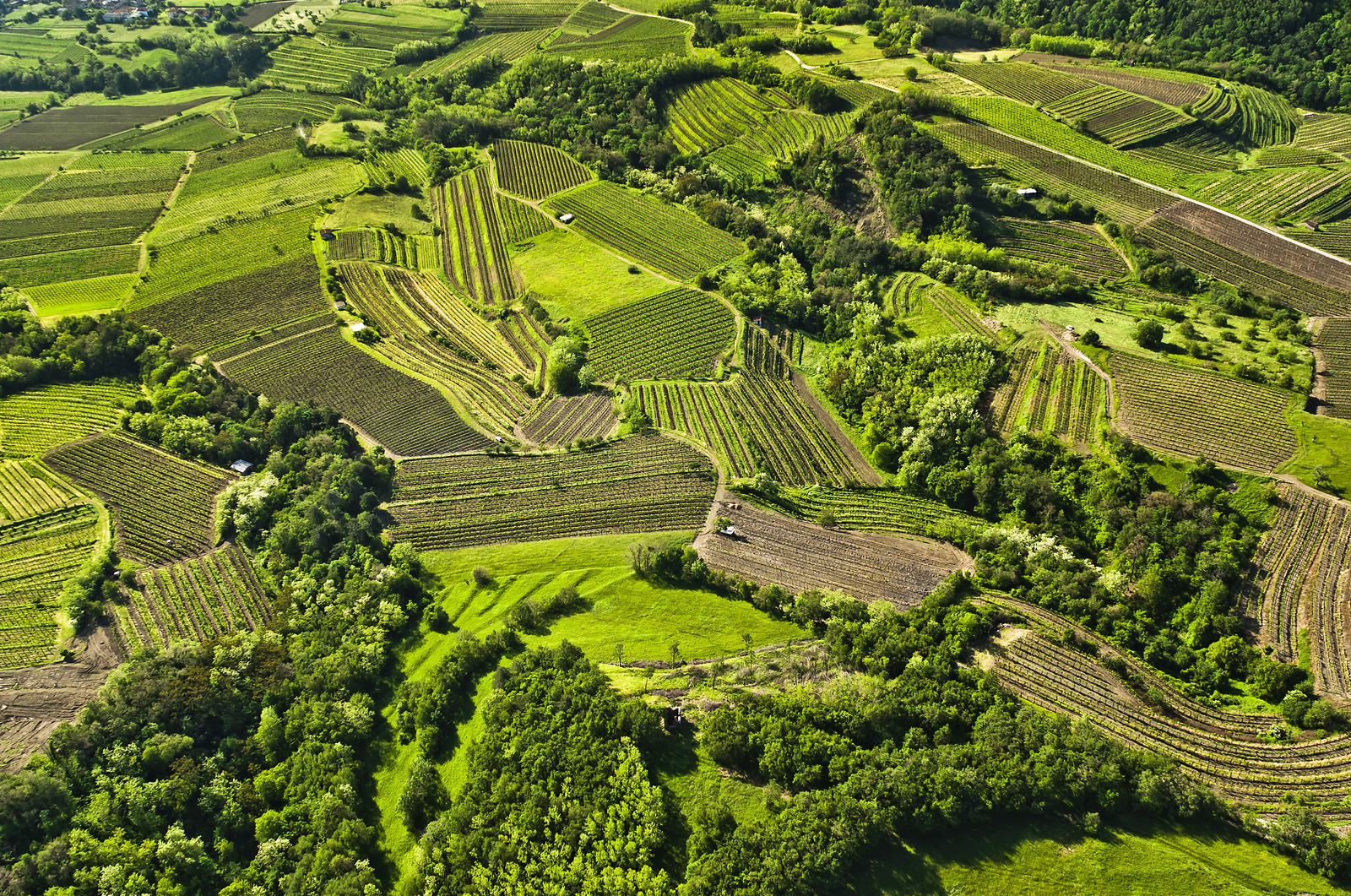UNESCO
Slovenia is abundant in stunning natural sights and rich cultural heritage. Some of them are part of the mosaic on the UNESCO World Heritage of Humanity list. Slovenia’s mighty beech forests and the amazing underground world of the Škocjan Caves are part of the natural heritage elite. Idrija, with what was formerly the second largest mercury mine in the world, and the culture of pile dwellers from the Ljubljana Marshes, where the oldest wooden wheel with an axle in the world was discovered, are among the world's greatest cultural achievements. Four of Slovenia’s special features are on the List of Intangible Cultural Heritage. This green country at the heart of Europe also boasts two geoparks – Karavanke with the Peca underground and Idrija with its geological fault. Four biosphere reserves led by the Julian Alps and Triglav, the country’s highest peak, are among the particularly sensitive treasures of UNESCO.
Natural heritage of humanity in Slovenia
The mighty world of forests
The beech forests of Slovenia are among the largest and most diverse in Europe. The Krokar and Snežnik-Ždrolce primeval forests are Slovenian natural monuments of special significance which have had an extraordinary effect on natural ecosystems since the ice age. The Krokar primeval forest is a piece of unspoilt nature unchanged by humans, lying at the heart of the Kočevje forests which are also home to the largest brown bear population in Europe, wolves, lynxes and native birds. They are not easy to spot, but skilled guides can get you on the track of these timid and mighty creatures. With its expansive dense forests, the Snežnik-Ždrolce nature area is a living classroom of sustainability with numerous educational and mountain trails.

Mysteries of the cave world
Škocjan Caves are the pride of the Karst and Slovenia with the deepest river canyon in Europe and one of the most important cave systems in the world. The stunning gorge, at the end of which the Reka River disappears underground, tempts you to explore the mysteries of this astonishing subterranean world and compare them to your subconsciousness, as was famously done by Freud. Here hides a subterranean kingdom with waterways, halls, stalactites and stalagmites creating otherworldly scene.

Cultural heritage of humanity in Slovenia
A town with the only liquid metal in the world
Idrija is the guardian of the world heritage of mercury mining and home to one of the oldest mine entrances in Europe. In the 15th century, a local wooden bucket-maker discovered something shiny in a stream between the Alps and the Mediterranean. This was only the beginning of the story of the second largest mercury mine in the world, which operated without interruption for almost 500 years. Idrija is a town with UNESCO heritage protection, which extends not only to its hidden underground tunnels, but also to the town centre and its surroundings. Idrija has a 300-year-old bobbin lace tradition, and Idrija lace masterpieces are renowned throughout the world.

Mystical pile-dwellings
Slovenia is a country which, on the Ljubljana Marshes, preserves, explores and represents the heritage of ancient pile-dwellings around the Alps. The most important find was a 5,200-year-old wheel, which is considered the oldest wooden wheel with an axle in the world. Finds related to pile-dwelling are on display in various museums, and the Ljubljana Marshes is an exciting landscape park which will captivate you as you explore the natural features of its marshy area.
Intangible cultural heritage of Slovenia
A living story with a message in its text
The Škofja Loka Passion Play is the oldest dramatic text in Slovenia with the oldest director’s book in Europe. The Biblical scenes have been performed in the streets of Škofja Loka’s medieval centre every six years for the last 300 years. Opulent costumes and scenes, and many local actors not only represent the Way of the Cross but a unique combination of images from the Old and the New Testament. This is the largest performance in Slovenia, filling the streets and attracting countless visitors. The next performance will be in 2021.

Kurent brings a promise of spring
When you hear cowbells in the Ptuj area in February, you will surely know that the door-to-door rounds of Kurenti are beginning. Bells are part of the apparel of Kurents, traditional Carnival characters. A Kurent wears a sheepskin, a distinctive head mask, high-ankle shoes, and red or green knitted socks. In its hand, it spins a ježevka, a thick stick with hedgehog spines. Its roots are in Slavic mythology, and it is thought to chase away winter, herald spring and a good harvest.

Fast fingers create a fashion accessory
Bobbin lace is a unique artistic expression and one of the recognisable symbols of the Slovenian identity. For centuries, exquisite products have been made by bobbin lacemakers, and the skill of bobbin twisting is passed on from generation to generation. Bobbin lacemaking is the manual production of lace by braiding, twisting and interlacing thread wound on special wooden spindles known as bobbins. Lace today is a fashion accessory and a decoration on clothes and home textiles, and an inspiration for artistic creations in architecture and even cuisine.
Stacking stones in a unique way
Dry-stone walling means that no binder is used during construction. Instead, the secret to its firmness is in the particular way the stones are stacked up. If stacked up correctly, they can defy all challenges for decades. It is popular around the Mediterranean area. In Slovenia, we can encounter such stone masterpieces preventing erosion in fields in the Karst and Slovenian Istria.
Sensitive green ecosystems
The Julian Alps or the mountains of superlatives
The Julian Alps Biosphere Reserve with its mighty peaks provides extraordinary views, crystal clear waters sparkling in the sun and a green landscape which fills you with tranquillity and fresh energy. Pleasant valleys with their villages and always lively mountains, where life in the summer months when herdsmen bring the livestock to pasture has been the same for three millennia, make hikers and cyclists feel right at home. The mountains of the Julian Alps, the kingdom of the Goldhorn, who still watches over the treasures of nature, rise above 2,500 metres. The king of the peaks is Triglav, Slovenia’s highest mountain. It has great symbolic meaning for Slovenians.

Secrets written in bedrock
Karavanke Geopark boasts unique flora and beautiful minerals which are rarely seen anywhere else in the world. Some of the minerals were exploited below the Peca and Obir mountains as ore in the past, but today they can be admired in museums. Unforgettable adventures await you in the deserted mine in Mežica, where you can explore the Peca underground by bike or kayak. The powerful natural forces have also formed beautiful caves with stalactites and stalagmites below Mt Obir.

From the Karst Plateaus steeply towards narrow river valleys
Idrija Geopark hides abundant natural surprises. Natural gems worth visiting are the Wild Lake and the Zgornja Idrijca Natural Park. Higher sections of the geopark provide excellent opportunities for recreation. Cyclists and hikers can enjoy this area in the summer, while skiing is possible in the winter on the Vojsko and Črni Vrh plateaus. To regain your strength, try Idrija žlikrofi.
Fairy tale world with true stories
The Karst Biosphere Reserve is a special world between the Gulf of Trieste, the Vipava Valley and Brkini. Its beauty and soul lie in the stone, which has always been visited by water and people. Together, they create a magical world of underground caves, disappearing rivers, sinkholes and other karst features. You will fall in love with the beauty of this dynamic coexistence on the edge of the Mediterranean.

Coexistance of people and the environment
Unspoilt nature and the cultural landscape of the Kozjansko and Obsotelje Biosphere Reserve are the green wealth of this part of Slovenia. This is a country which fosters genuine contact with nature, relaxation and warm hospitality.
